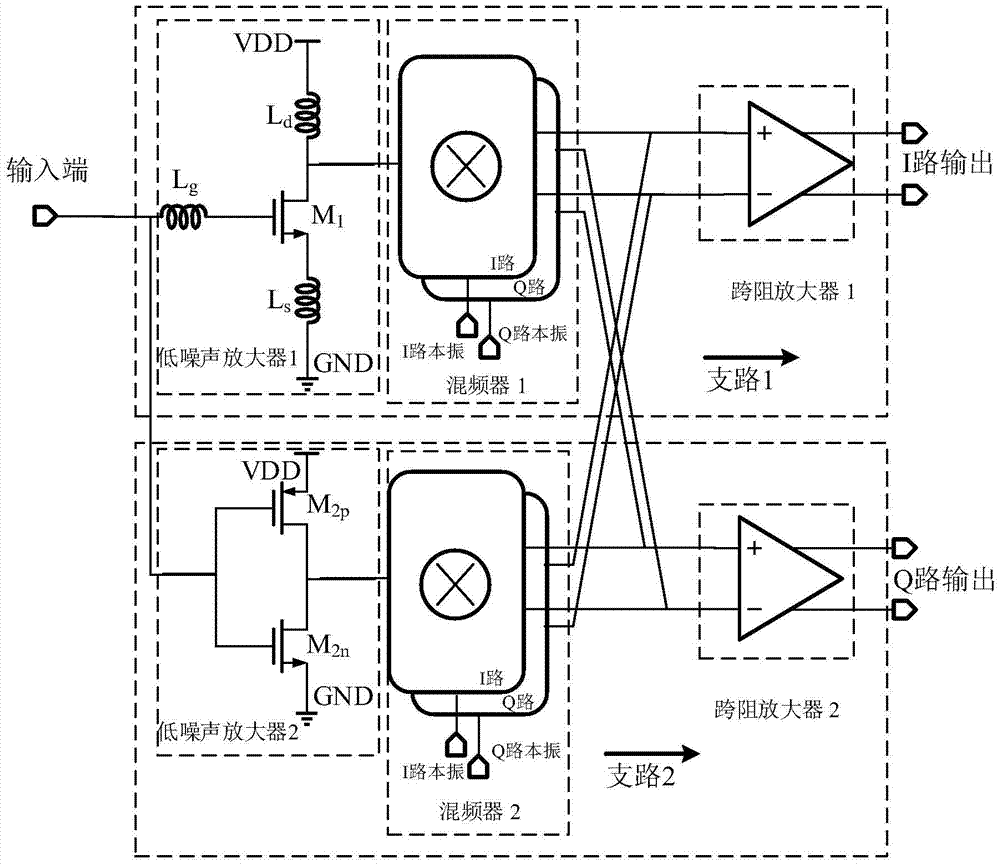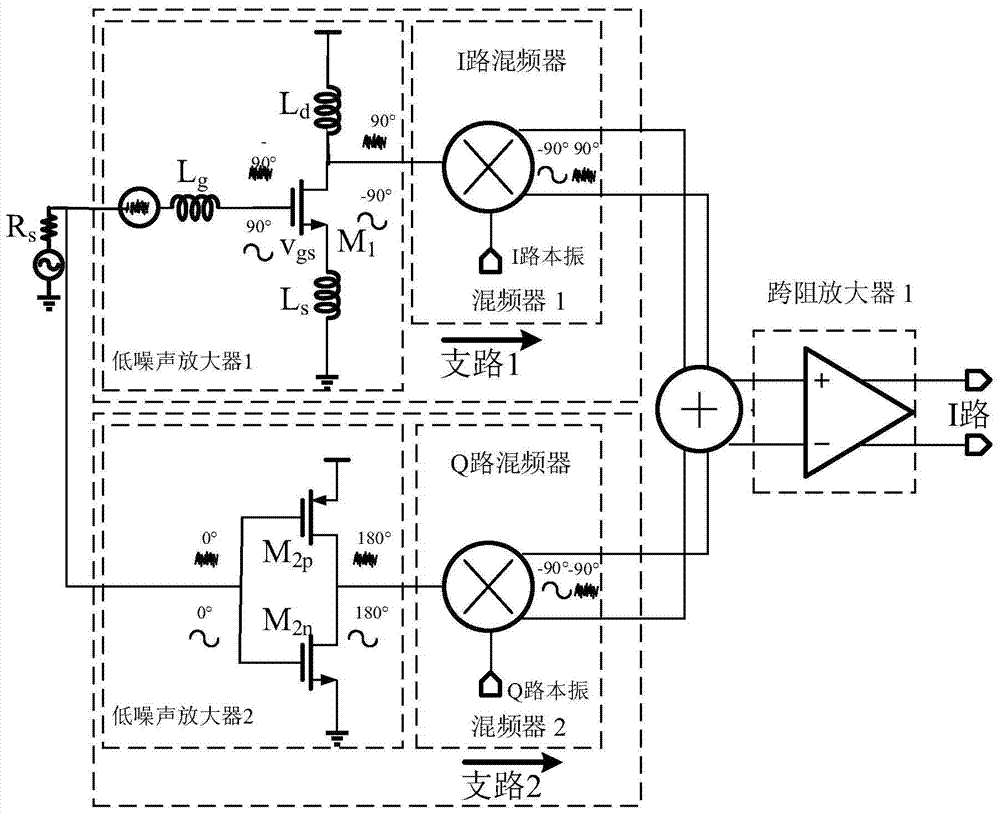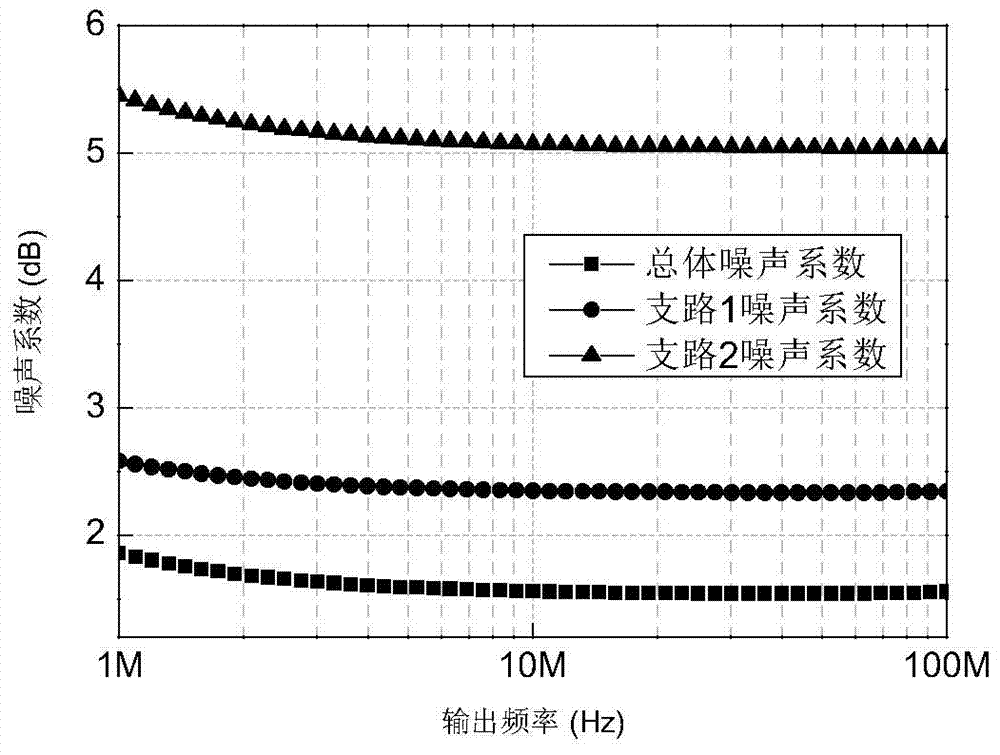A Receiver Front-End Circuit Based on Integrated Inductive Noise Cancellation Technology
A receiver front-end, noise cancellation technology, applied in improving amplifiers to reduce noise effects, electrical components, DC-coupled DC amplifiers, etc., can solve problems such as increasing circuit manufacturing costs, affecting integration, high thermal noise, etc., to eliminate Noise, improved noise performance, low noise effect
- Summary
- Abstract
- Description
- Claims
- Application Information
AI Technical Summary
Problems solved by technology
Method used
Image
Examples
Embodiment Construction
[0017] In order to make the object, technical solution and features of the present invention clearer, specific implementation methods will be described in detail below in conjunction with the accompanying drawings.
[0018] The present invention proposes a receiver front-end circuit based on integrated inductance noise cancellation technology. On the basis of using integrated inductance, a new circuit structure is adopted to eliminate thermal noise contributed by integrated inductance in a feedforward manner, ensuring low The noise figure meets the performance requirements of the wireless communication standard for the receiver front-end, and improves the integration of the entire receiver front-end system.
[0019] In order to achieve the above purpose, a receiver front-end circuit based on integrated inductive noise cancellation technology of the present invention adopts a zero-IF architecture, and the entire receiver front-end circuit is divided into two identical branches, ...
PUM
 Login to View More
Login to View More Abstract
Description
Claims
Application Information
 Login to View More
Login to View More - R&D
- Intellectual Property
- Life Sciences
- Materials
- Tech Scout
- Unparalleled Data Quality
- Higher Quality Content
- 60% Fewer Hallucinations
Browse by: Latest US Patents, China's latest patents, Technical Efficacy Thesaurus, Application Domain, Technology Topic, Popular Technical Reports.
© 2025 PatSnap. All rights reserved.Legal|Privacy policy|Modern Slavery Act Transparency Statement|Sitemap|About US| Contact US: help@patsnap.com



